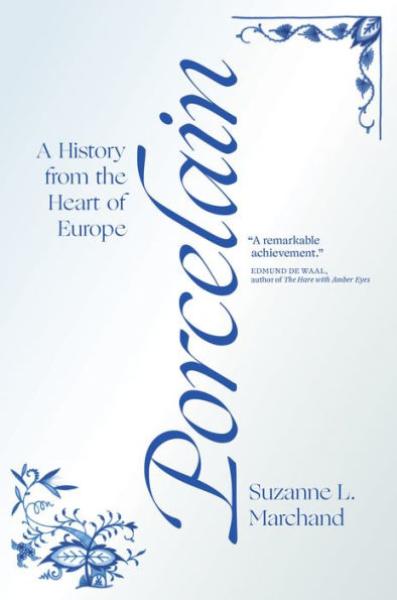Description
This is the book on porcelain we have been waiting for. . . . A remarkable achievement.--Edmund de Waal, author of The Hare with Amber Eyes
A sweeping cultural and economic history of porcelain, from the eighteenth century to the present
Porcelain was invented in medieval China--but its secret recipe was first reproduced in Europe by an alchemist in the employ of the Saxon king Augustus the Strong. Saxony's revered Meissen factory could not keep porcelain's ingredients secret for long, however, and scores of Holy Roman princes quickly founded their own mercantile manufactories, soon to be rivaled by private entrepreneurs, eager to make not art but profits. As porcelain's uses multiplied and its price plummeted, it lost much of its identity as aristocratic ornament, instead taking on a vast number of banal, yet even more culturally significant, roles. By the nineteenth and twentieth centuries, it became essential to bourgeois dining, and also acquired new functions in insulator tubes, shell casings, and teeth.
Weaving together the experiences of entrepreneurs and artisans, state bureaucrats and female consumers, chemists and peddlers, Porcelain traces the remarkable story of "white gold" from its origins as a princely luxury item to its fate in Germany's cataclysmic twentieth century. For three hundred years, porcelain firms have come and gone, but the industry itself, at least until very recently, has endured. After Augustus, porcelain became a quintessentially German commodity, integral to provincial pride, artisanal industrial production, and a familial sense of home.
Telling the story of porcelain's transformation from coveted luxury to household necessity and flea market staple, Porcelain offers a fascinating alternative history of art, business, taste, and consumption in Central Europe.
"This is a history of porcelain as a business and consumer product, from the eighteenth century to the present day. Many books have been written on Chinese porcelain as an exotic import from Asia, but this book tells the history of the Central European reinvention and mass production of the material. Porcelain was first invented in medieval China, but the evolution of what its first producers called "white gold" was set in motion by Saxon king Augustus the Strong. Augustus obsessed over owning a personal alchemist, Johann Bèottger, whom he imprisoned in his castle, first to make gold, and when that failed, to make porcelain. Trained in chemistry by an apothecary, Bèottger took advantage of the king's obsession with porcelain and eventually produced the first European ceramic vessels whose delicacy and strength resembled those of Asian imports. Augustus funded the creation of a Saxon royal manufactory, which became the famous Meissen factory, and which to this day stands for the highest quality in porcelain. By the time of Bèottger's death in 1719, Meissen porcelain had become famous throughout Europe and the world, its wares in high demand by other monarchs and aristocratic consumers. Soon after the porcelain maker's death, his secret recipe was stolen, and dozens of Central European princes opened their own manufactories. Here, author Suzanne L. Marchand shows how the story of European porcelain is an intertwined history of the mercantile state policy that built these factories, the luxury trades that sustained them, the debates about what counted as "art," and the changes in consumer and material culture driving the business. Throughout the eighteenth century, porcelain production was an industry of competitive, mercantile production under royal ownership. By 1850, however, after only a few state-backed firms survived the financial crises of 1815-1830, the Central European porcelain industry had become the domain of mass producers and trademark forgers. Marchand then traces the story of Central European porcelain into the twentieth century, exploring the new challenges of cartelization, the rise of Japanese and Czech competition, and the impact of the two world wars, following several porcelain firms through the Nazi era and the Russian seizures of companies in the German East. At each point, Marchand uses the history of porcelain to link the businesses, and the states that helped sustain them, to the broader history of culture and consumption"--
Finalist for the PROSE Award in European History, Association of American Publishers
Marchand, a specialist in German history, writes with clarity.---Norma Clarke, Times Literary Supplement
To weave together cultural, economic, and social history so masterfully takes great historiographical experience and skill. All those who are interested in nineteenth-century German intellectual history admire Suzanne Marchand's books on the reception of classical antiquity and orientalism. Now she has surprised us with something completely new---Jürgen Osterhammel, Frankfurter Allgemeine Zeitung
Marchand paints a colourful picture of the day-to-day life of porcelain factories.---Caroline McCaffrey-Howarth, Apollo
[A] sweeping economic, social and cultural history of central Europe. . . . unorthodox and engaging.---Marc Levinson, Wall Street Journal
A wide-ranging and thorough study. . . . this is a riveting story, well told . . . by Marchand, who illuminates so much in an original and entertaining way.---Tim Blanning, Literary Review
As Suzanne Marchand shows in her meticulous new book, porcelain has been integral to German life since its reinvention in Saxony in 1708.-- "The Economist"
Product Details
- Princeton University Pres Brand
- Jun 30, 2020 Pub Date:
- 0691182337 ISBN-10:
- 9780691182339 ISBN-13:
- 544 Pages
- 9.4 in * 6.3 in * 1.4 in Dimensions:
- 2 lb Weight:




